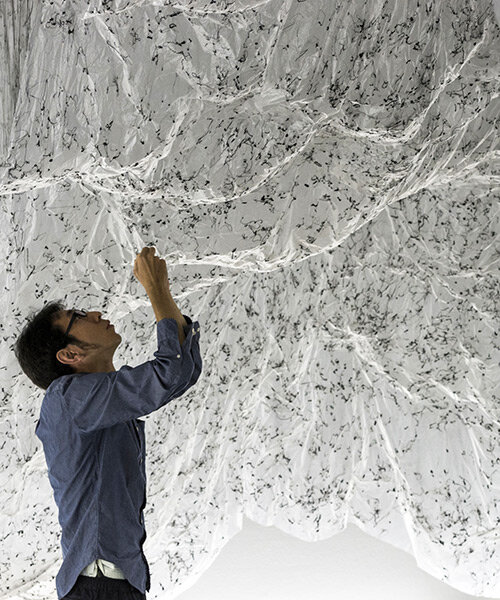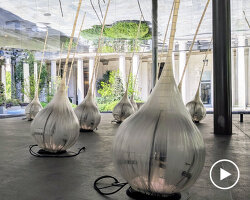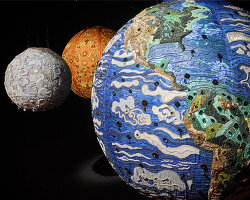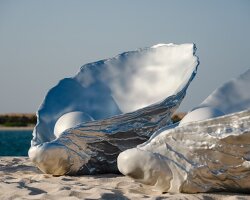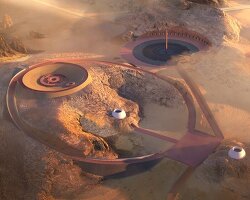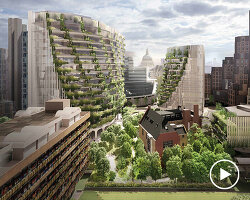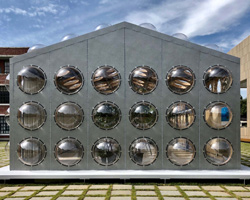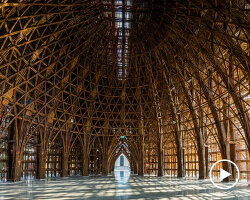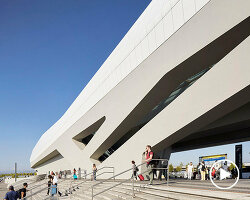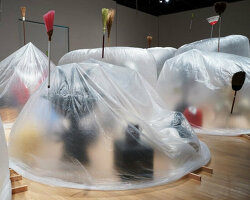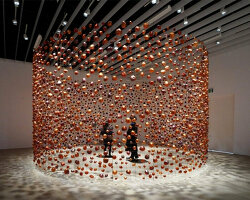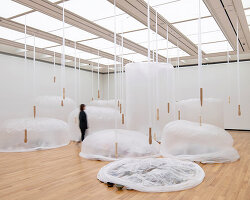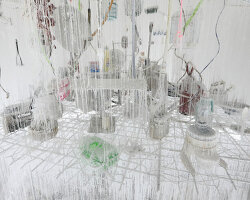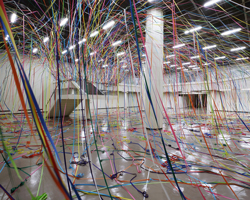can emptiness be expressed? can voids have volume? can space be sculpted? over the course of countless creative endeavors, japanese artist yasuaki onishi has dedicated his artistic output to the transformative power of negative space. using humble materials — such as glue, wire, and plastic sheets — onishi has created monumental, mountainous forms within rice university’s art gallery, made the intangible, tangible for mercedes-benz, and suspended vertical emptiness inside an old japanese sake winery. ‘I create works that visualize spaces that are normally recognized as cavities and margins with simple themes such as volume, verticality, and distance,’ the artist tells designboom about his fascination with voids and spatial transformation. ‘the exhibition space transforms into a vessel that stores imagination and thoughts. through my works, we are looking into the other side of the world.’
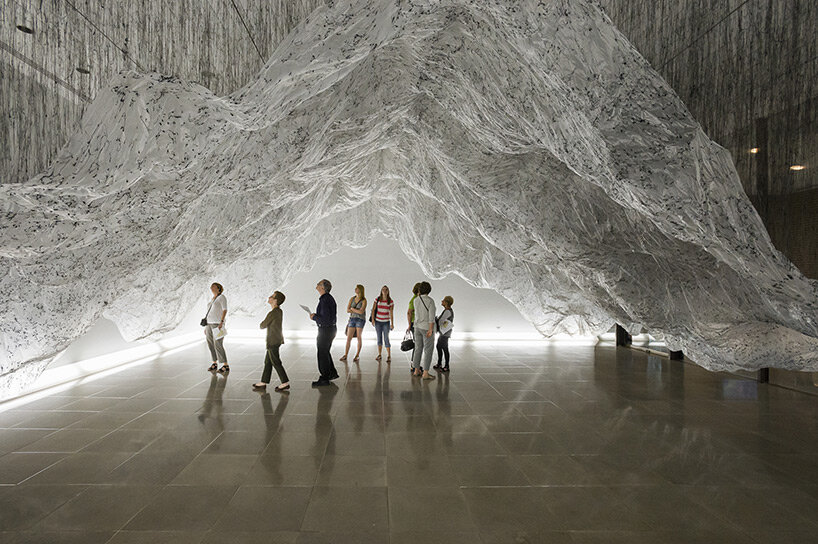
reverse of volume RG, 2012 at rice gallery, houston, texas, USA (solo exhibition) — also main image
h470, w1340, d1210 cm | glue, polyethylene sheeting, other
image by nash baker
having studied sculpture at the university of tsukuba and kyoto city university of arts, yasuaki onishi began working on his ‘reverse of volume’ series in 2009. the painstaking process involves the careful draping of plastic sheeting over stacked cardboard boxes, which are then removed to leave only their impressions — the ‘floating’ form is then seemingly attached to the ceiling by individually dripped strands of hot glue. this process of ‘reversing sculpture’ is onishi’s signature statement on the impressionable nature of negative space. since then, the artist has continued to find form where there is none, creating vertical volumes from inflated plastic sheets and crystallized forests from glue.
designboom spoke with yasuaki onishi about cherishing the ‘sense of filling the space’, and being rooted in tactile experiences in an increasingly virtual world.
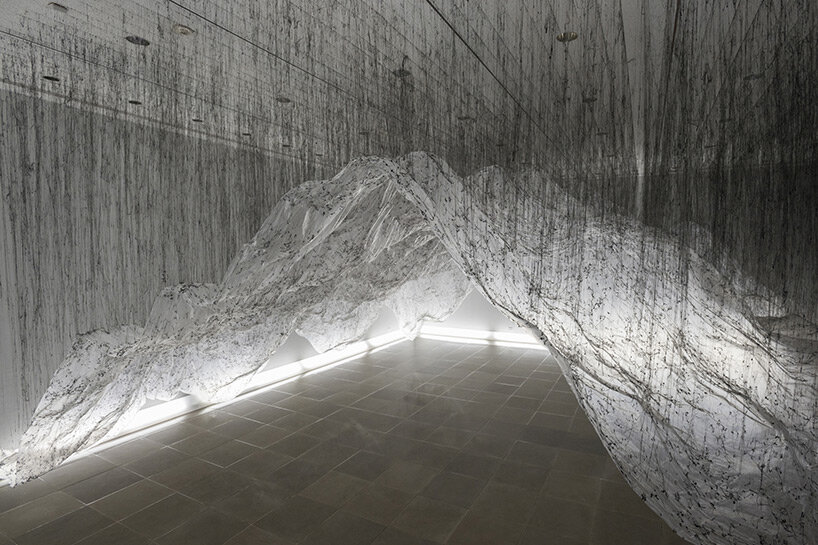
reverse of volume RG, 2012 at rice gallery, houston, texas, USA (solo exhibition)
image by nash baker
designboom (DB): what aspects of your background and upbringing have shaped your creative principles and philosophies?
yasuaki onishi (YO): studying sculpture was very significant. I was interested in the process of ‘molding’ in the production of sculptures, and I felt that I could find the ‘invisible parts’. at first, I made works using various methods — such as metal sculptures in the shape of wood, and photographs of sparks from grinding metal. after that, I started creating site-specific installations that can only be established on the spot, which has led to my current work.
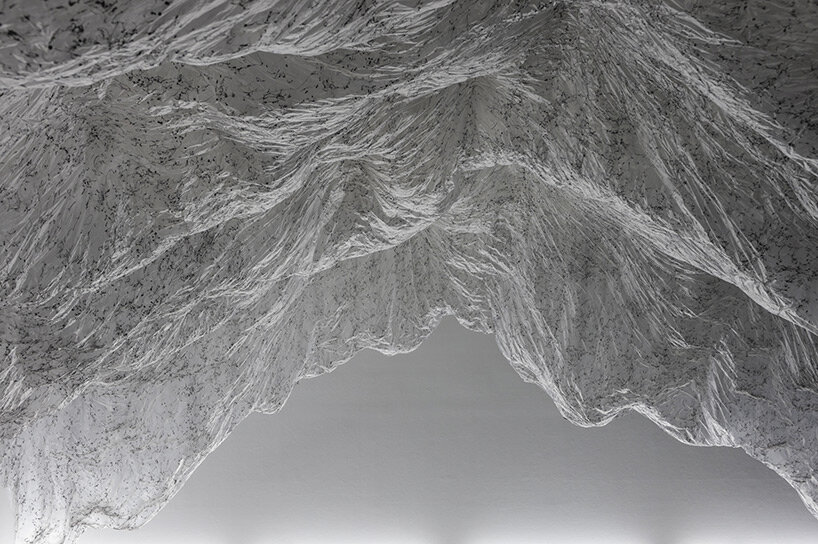
reverse of volume RG, 2012 at rice gallery, houston, texas, USA (solo exhibition)
image by nash baker
DB: what draws you to humble, everyday materials — such as glue, wire, and plastic sheets — and what excites you about giving form to them?
YO: I think that the material is not intimidating, and is suitable for expressing emptiness and voids. not all materials are everyday, but it may also be important to make the viewer unconsciously feel that they are not a big deal.
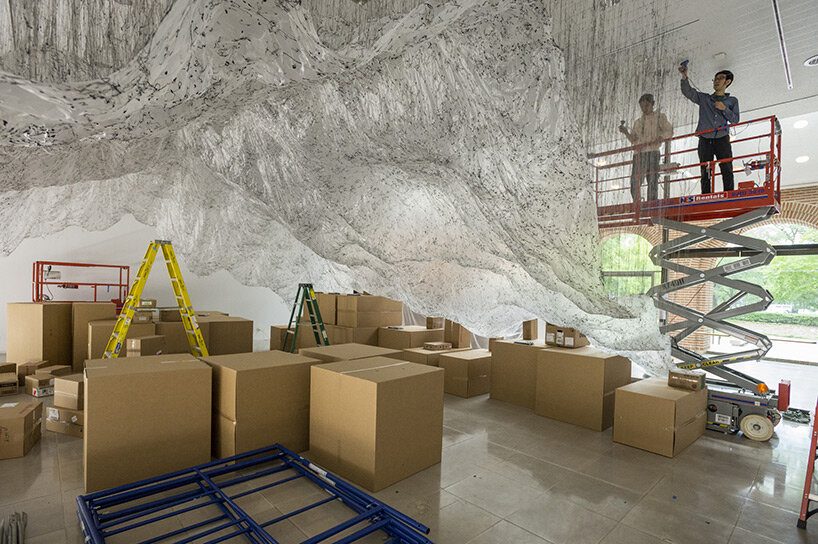
work in process reverse of volume RG
image by nash baker
DB: much of your work deals with material and spatial transformation — can you talk about the ideas of void and emptiness, and how they relate to your practice?
YO: through exhibitions in various places around the world, I have felt that the concept of emptiness and void is very different for every viewer. it’s a big discovery for me and the potential of the work. I want to create a place that encourages the viewer to pour their own imagination into the cavity.
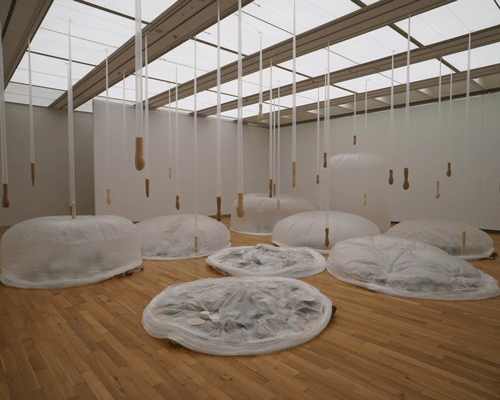
distance between presence and absence, 2020 at takamatsu art museum, takamatsu, japan
size variable | polyethylene sheeting, fan, timer, tableware, food and drink containers, rice, soybeans, other
DB: how planned is the configuration of each piece? is there room for spontaneity and improvisation while you are working?
YO: I like to imagine my work in exhibition spaces where nothing is placed — for example, famous museums that are not planning exhibitions, places like the remains of factories, and so on…I will decide a rough size based on the drawings and photos of the exhibition space and plan. depending on the type of work, I often change plans while working in the field. I cherish the ‘sense of filling the space’ that I can actually feel at that place.
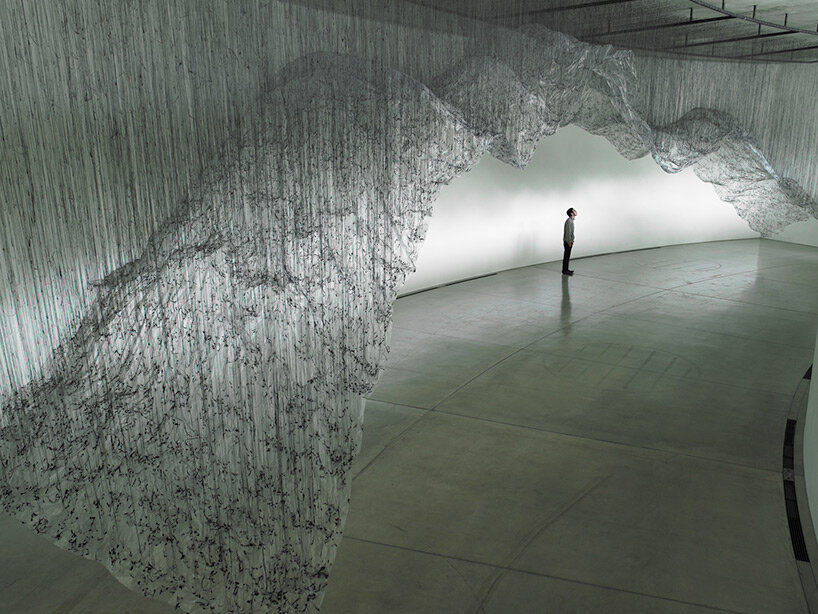
reverse of volume ACAC, 2009 at aomori contemporary art centre, aomori japan
h593, w360, d2000 cm | glue, polyethylene sheeting, other
image by tadasu yamamoto
DB: thematically, what is the common thread that underpins your work overall?
YO: I create works that visualize spaces that are normally recognized as cavities and margins with simple themes such as volume, verticality, and distance. the exhibition space transforms into a vessel that stores imagination and thoughts. through my works, we are looking into the other side of the world.
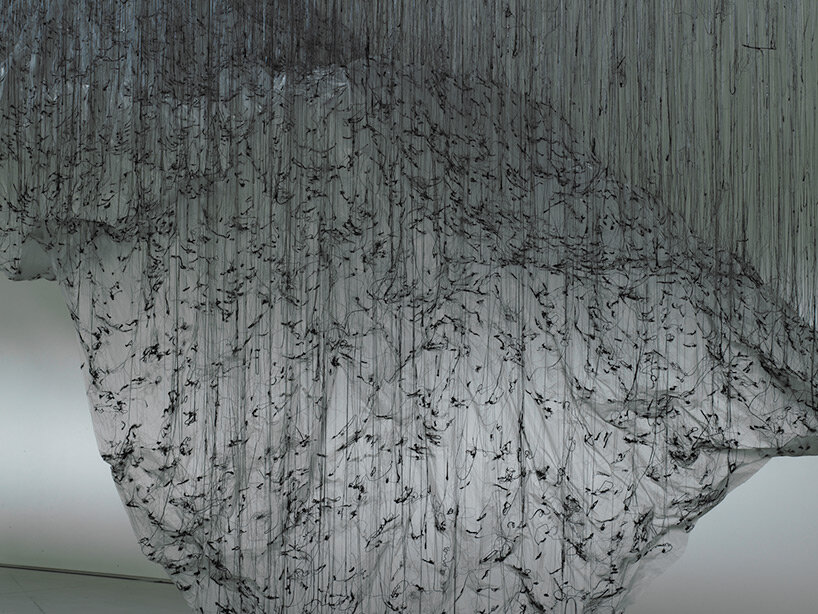
reverse of volume ACAC, 2009 at aomori contemporary art centre, aomori japan
image by tadasu yamamoto
DB: what do you hope audiences take away from your work? are there certain themes you hope your work provokes discussion about?
YO: I expect that viewers will have the opportunity to look at this world from a different standpoint than before. I would like to create something in which a part of the work and the relationship with the viewer suggests the world and society in which we live.
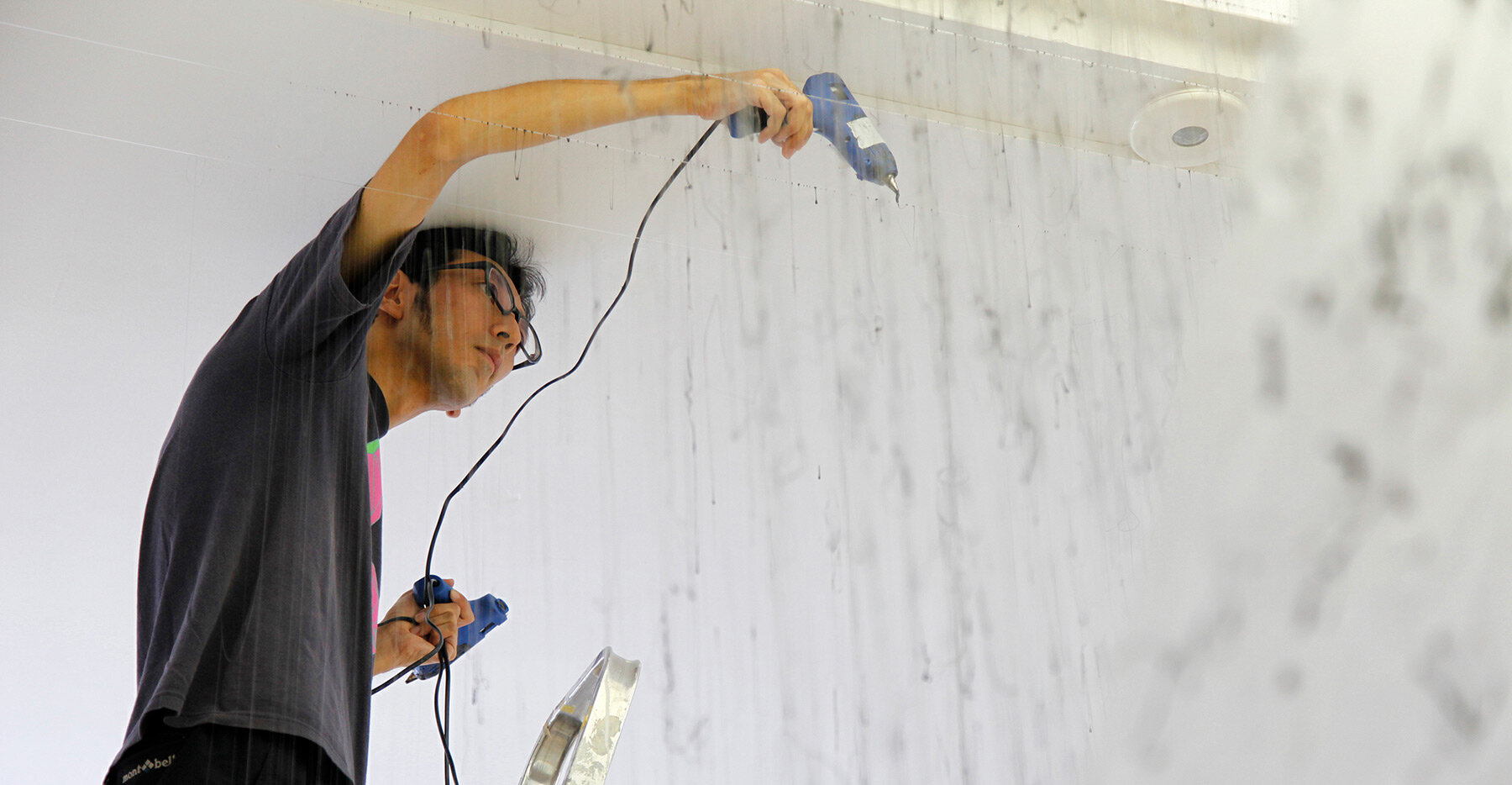
work in process reverse of volume WIM | image by oded ben-hefer
DB: in a world that is increasingly virtual, your work is firmly rooted in tactile and physical experience. do you think society today is moving too far away from materiality, and traditional ways of making?
YO: we may feel that it is not material, as a result of having too many opportunities to see works of art through photographs and videos. many of my works are not permanent, so I also rely on photos and videos to see them. however, I actually stand in front of the work and believe in the power of the phenomenon that occurs in front of us.

shaping air, 2013 | project with mercedes-benz CLA, stuttgart germany
glue, polyethylene sheeting, other
DB: what are you currently fascinated by, and how is it feeding into your artistic practice?
YO: an attempt to incorporate elements close to everyday life into the work, such as food, tableware, and ready-made products. I have come to think that it is important to reaffirm the happiness of living day-to-day during a lifetime.
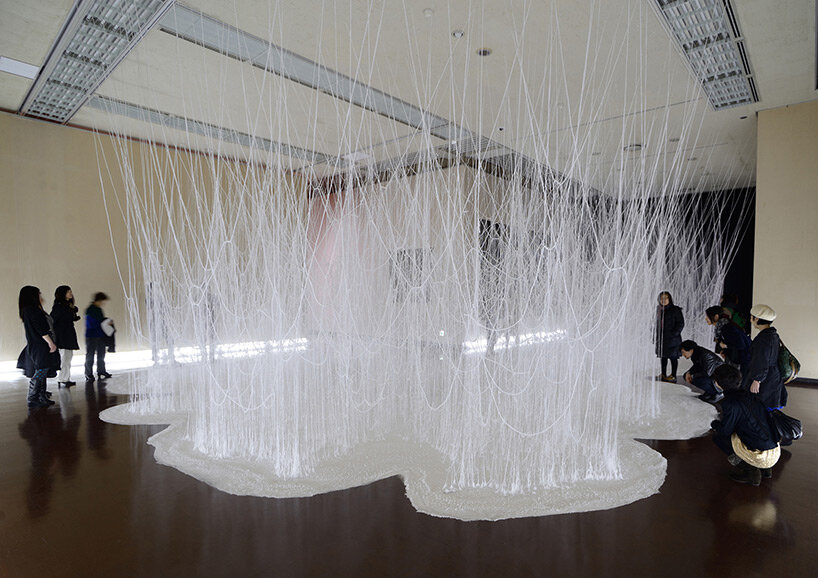
vertical emptiness (volume of strings), 2014 at fukuoka art museum, fukuoka japan
h590, w1820, d1360 cm | rope, glue, urea, other
DB: can you tell us about any upcoming projects you are particularly excited about?
YO: I have plans for projects that collaborate with advanced technologies and materials of a company. the details have not been decided yet, but I’m looking forward to it, as it seems to be a work with a significantly different shape than before.
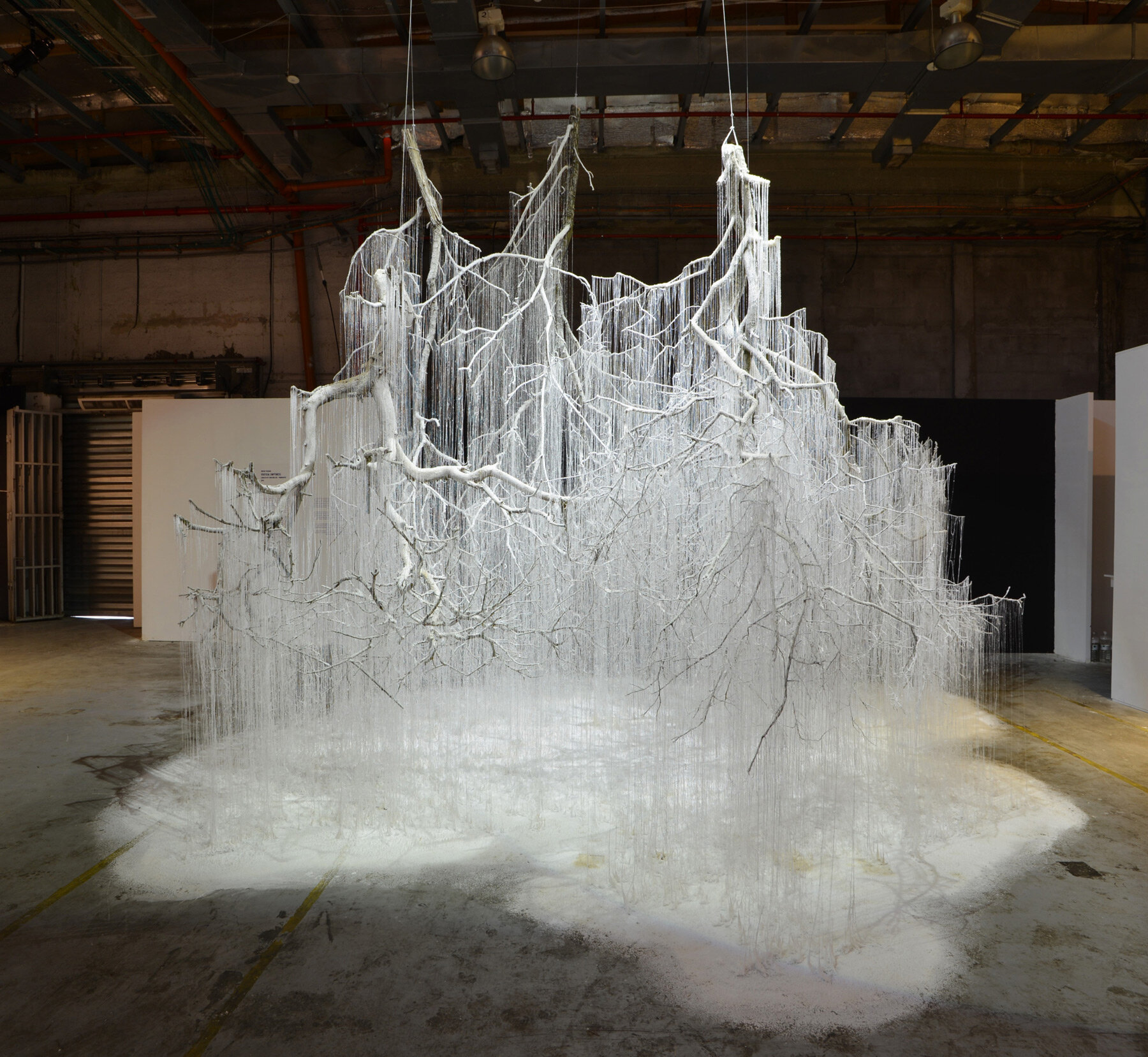
vertical emptiness FP, 2016 at yarid hamizrach, tel aviv, israel | tree branch, glue, urea, other
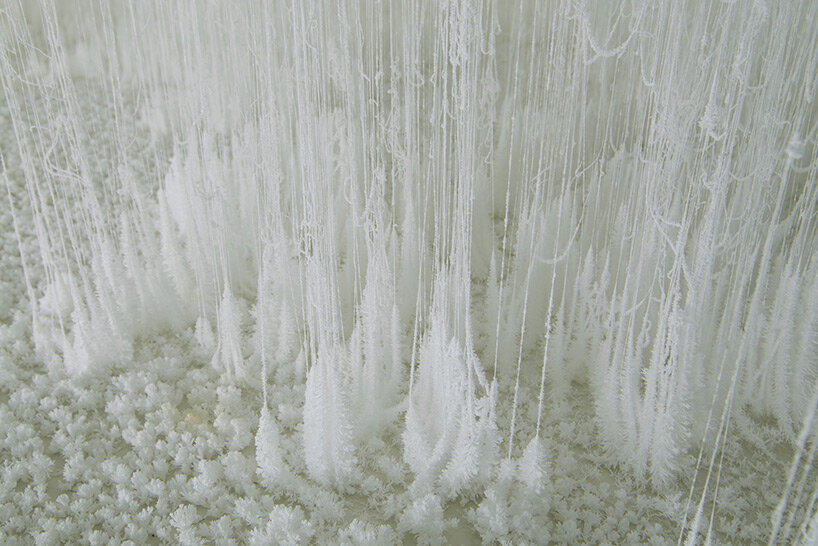
vertical emptiness (detail)
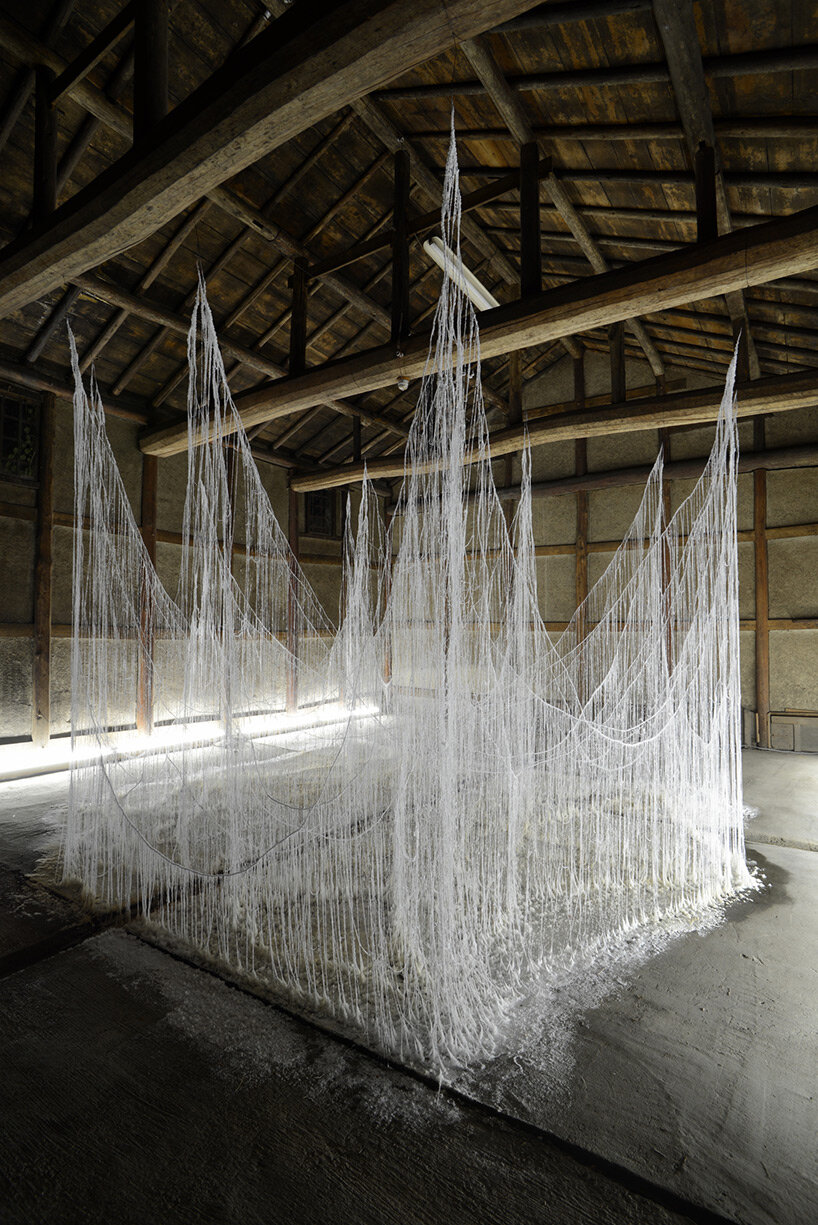
vertical emptiness (organic parabola), 2013 at asai’s winery, yamatokoriyama japan
h285, w570, d860 cm | wire, glue, urea, other
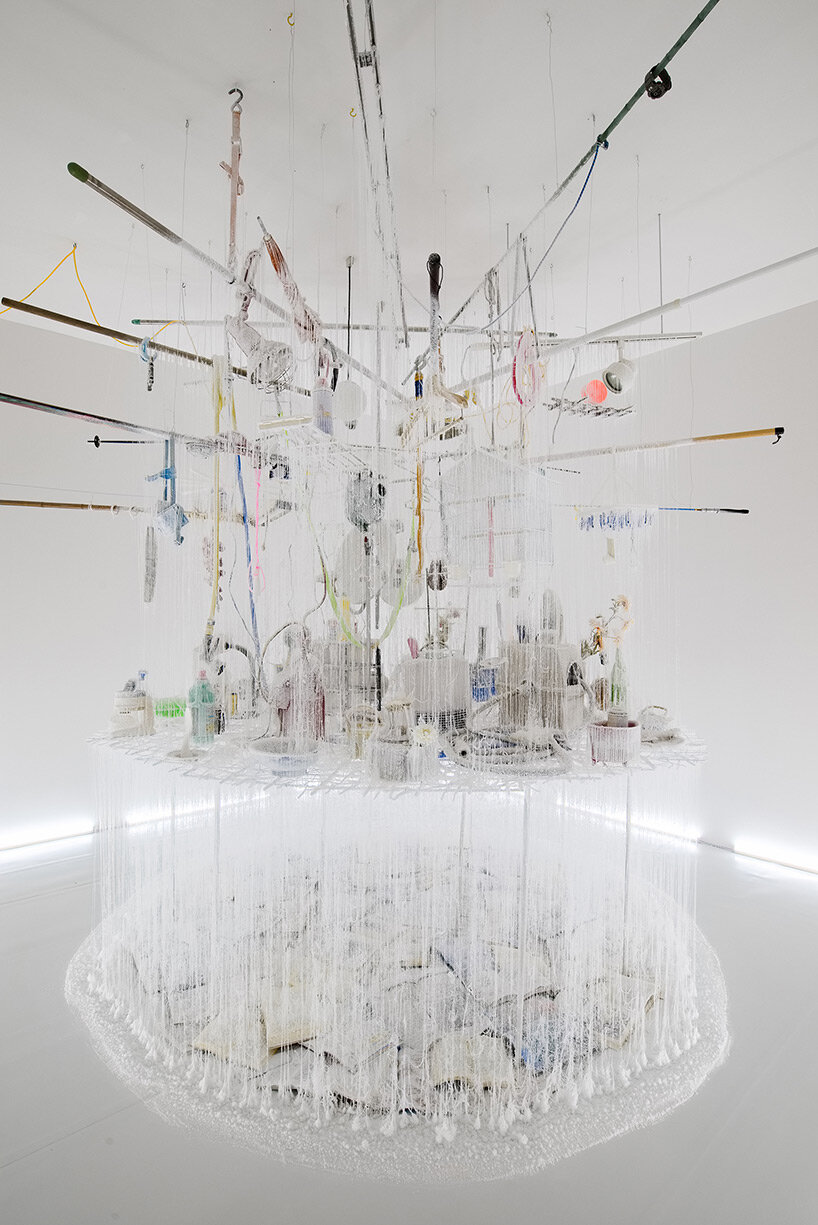
ditch of time, 2020 at the museum of fine arts, gifu japan
h360, w460, d460 cm | mesh table, article for daily use, book, glue, urea, other
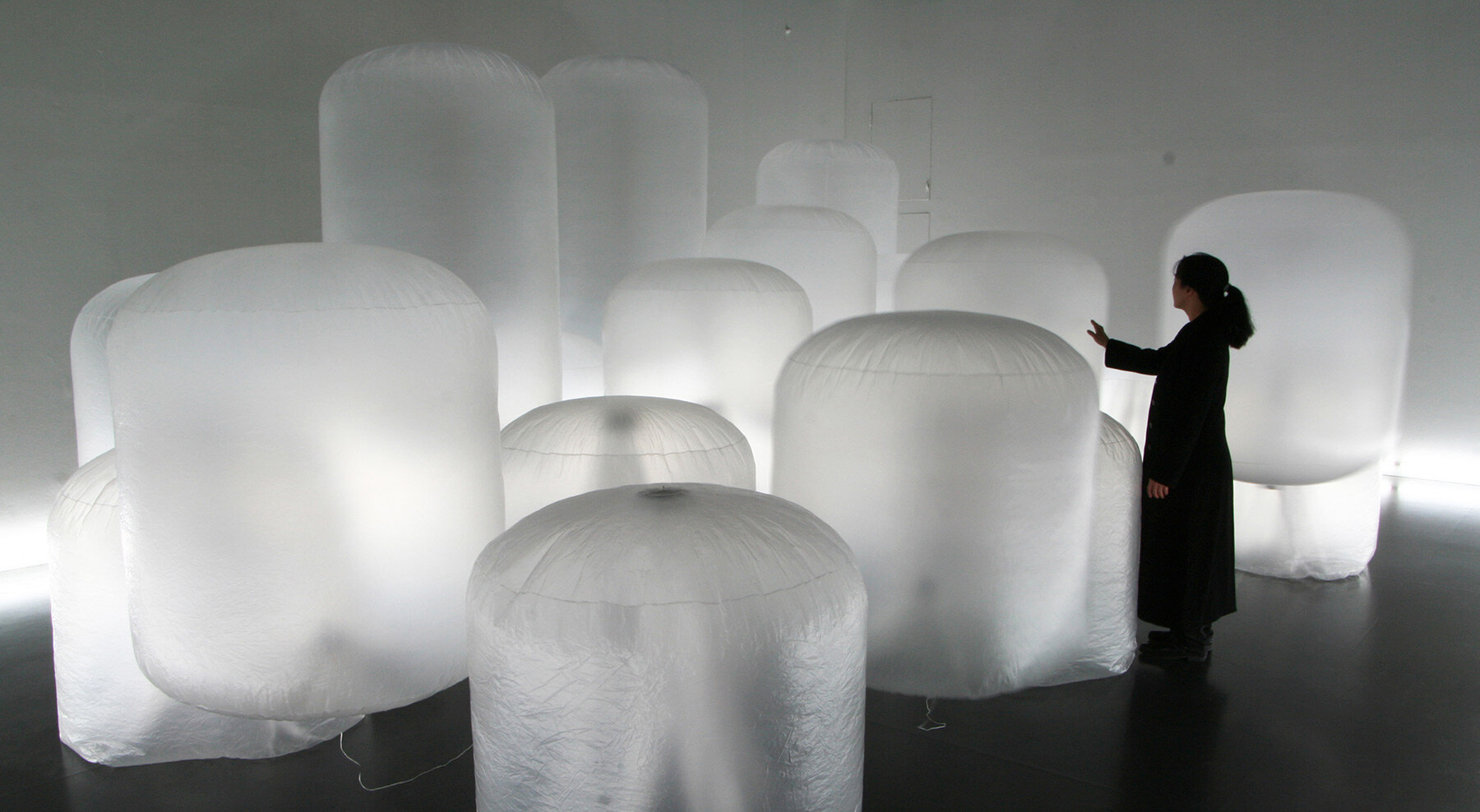
vertical volume SMOA, 2009 at seoul museum of art, seoul korea | h400, w660, d960 cm | plastic sheet, fan, other
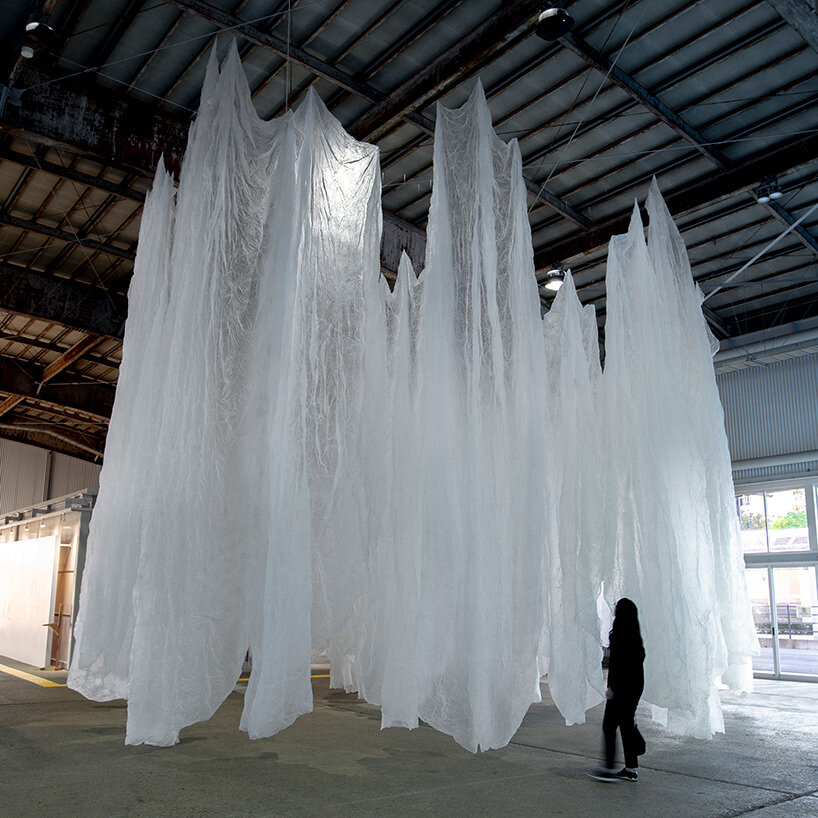
cerculation of water, 2018 at bandaijima multipurpose plaza, niigata japan
h9.0, w10.0, d10.0 m | plastic sheet, other
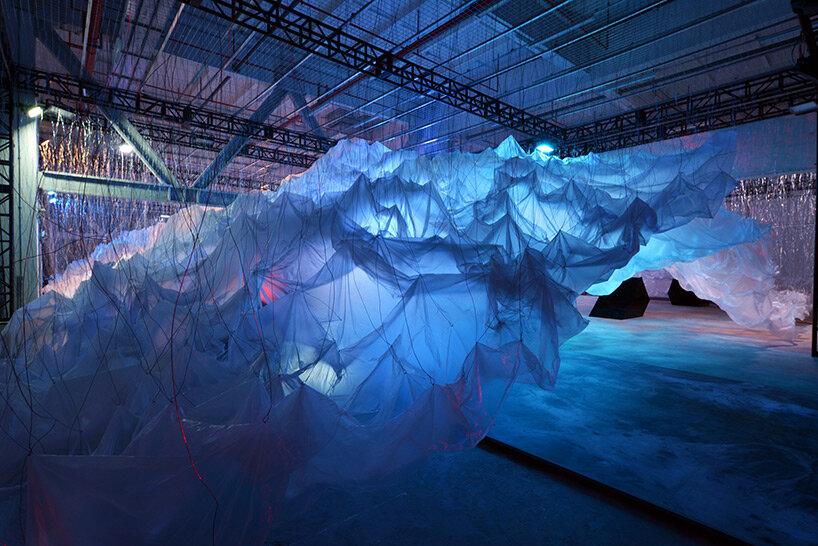
lost in play 2, 2019 at east bund・minsheng art wharf, shanghai china
polyethylene sheeting, wire, other
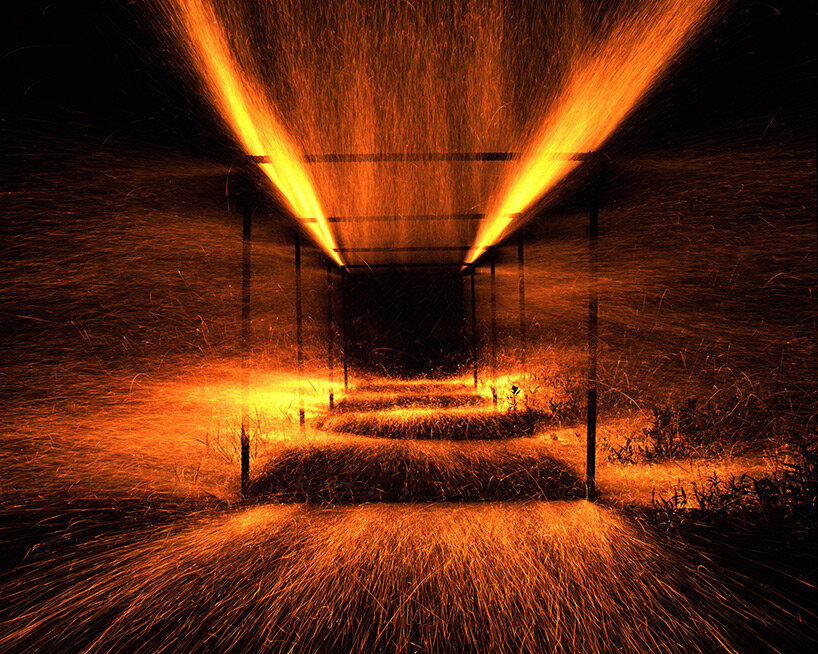
darkness thing, 2003 | C print
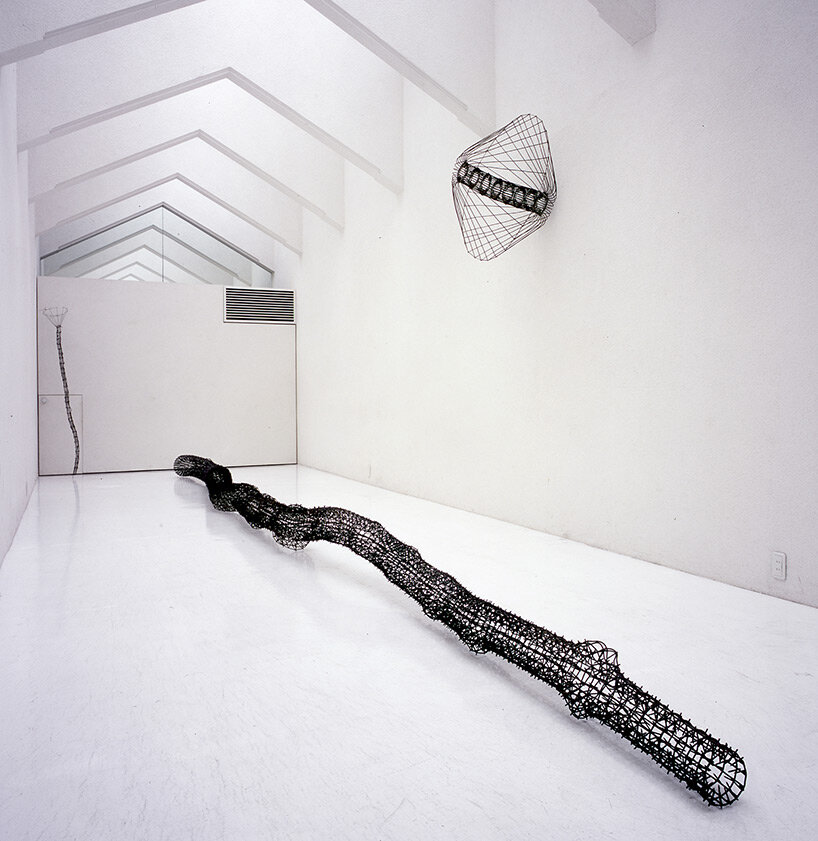
pipe, 2002 at metal art museum, inzai japan | stainless steel
